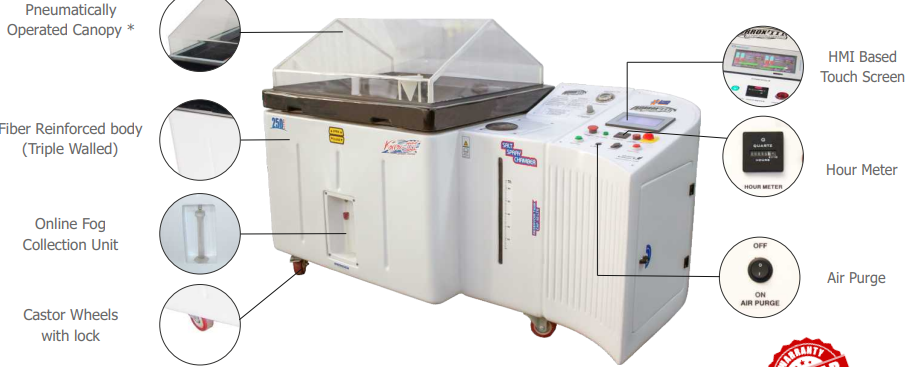

Ever wonder how company’s make sure their stuff don’t rust away in tough places? That’s where the salt spray test come in, a hardcore way to check if materials and coatings can stand up to corrosion. Also called the salt fog test, it put samples through a salty hell, like what you’d find by the ocean or on salted winter roads. Industries like cars, airplanes, and ships lean hard on this test to make sure their products last. This guide dig deep into what salt spray testing is, why it matter, how it work, and where it’s used. Whether you’re a gearhead engineer or just curious, here’s the full scoop on corrosion testing.
At it’s core, the salt spray test is a brutal, sped-up corrosion test that throw materials or coated surfaces into a salty nightmare. It use a fine mist of saltwater—usually 5% sodium chloride—to mimic the harsh bite of seaside or road-salt conditions. The point? To see how long a material or coating can hold off rust, pitting, or other decay. This test is key for checking:
The results show if materials can hack it in tough spots, so products don’t fall apart when the going get rough.
This test happen in a beast called a salt spray chamber, built to unleash a controlled corrosive attack. Here’s the breakdown:

It’s a tough, controlled way to beat up materials and see what they’re made of, way faster than nature would.
Need help? Our team is just a call away.
To keep things legit across the world, salt spray tests follow strict standards. The big ones are:
These lay out the law on solution mix, temperature, test length, and how to judge the damage, so every lab’s on the same page.
The salt spray chamber is the star of this show, built tough to handle its own corrosive chaos. What make it tick:
.png)
Top salt spray chamber manufacturers build these bad boys with custom options, dialed in for standards like ASTM B117 or ISO 9227.
This ain’t just lab nerd stuff—it’s a lifesaver for industries fighting corrosion in the real world. Where it’s used:
It sniff out weaknesses, so makers can tweak designs and pick materials that don’t flinch.
To get solid data, stick to these hard-earned tips:
Picking a salt spray chamber manufacturer ain’t a small choice. What to check:
The salt spray test is a heavy-hitter in corrosion testing, a brutal but key way to make sure materials and coatings can take a beating from the elements. From the controlled chaos of a salt spray chamber to the strict rules of ASTM B117 and ISO 9227, it give critical insight for cars, planes, ships, and more. By sticking to best practices and picking top-notch gear, makers can build stuff that stand strong against rust and decay, proving they got what it take in the toughest spots.
1. What’s the deal with a salt spray test?
It’s a rough test to check how materials or coatings hold up against corrosion, like in salty ocean or road conditions. It make sure your stuff don’t rust away.
2. How long a salt spray test take?
Depend on the material and rules, but it range from 24 hours to weeks. Common times are 48, 96, or 240 hours, based on stuff like ASTM B117 or ISO 9227.
3. Do salt spray tests show real-world results?
They’re a good start, but they’re sped-up tests. They focus on salt corrosion, not everything nature throws at you. Combine with other tests to get the full picture.
Looking for a high-performance Salt Spray Chamber to test corrosion resistance? Connect with Presto Group today at Call +91 9210 903 903 or Mail info@prestogroup.com for expert guidance and top-quality testing equipment!
Related Blogs

Master ASTM B117 testing with Presto Group. Avoid costly errors and ensure reliable, accurate salt spray results every time.

Cyclic Salt Spray Testing Machine explained with diagram, test cycles, working process, and industrial applications. Learn how cyclic corrosion testing ensures product durability and compliance.

"Step-by-step Salt Spray Test procedure as per ASTM B117 with best practices for consistent and accurate corrosion resistance testing."